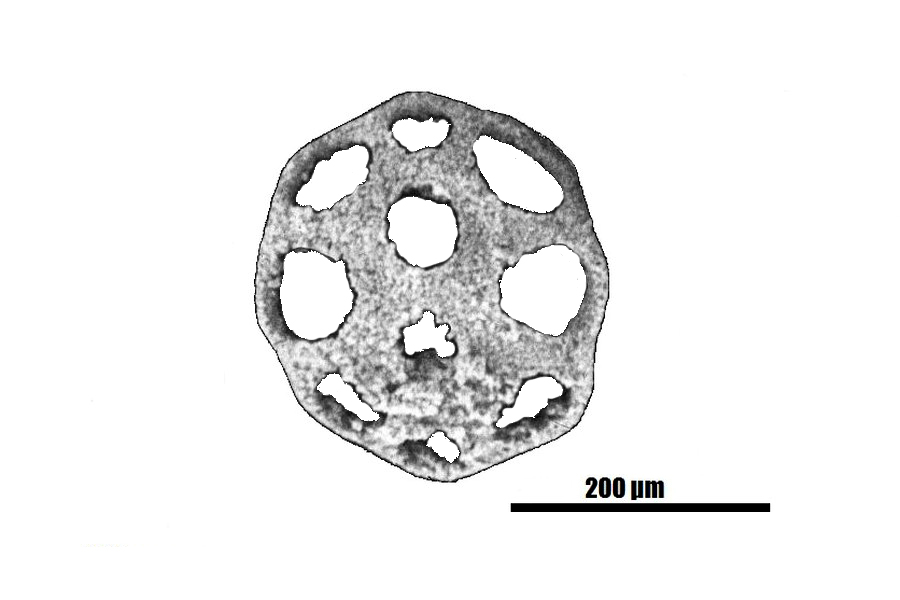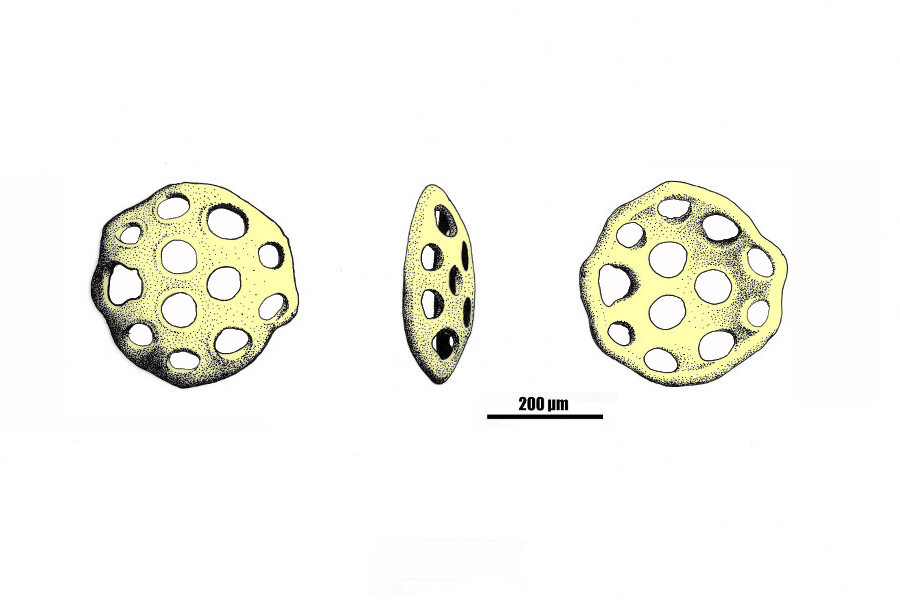Mercedescaudina langeri Boczarowski, 2001
Sugerowana cytacja: Piotr Gryz 2020. Mercedescaudina langeri Boczarowski 2001. Ikonoteka (http://ikonoteka.paleo.pan.pl/xwiki/bin/view/Species/Mercedescaudina+langeri)
Diagnoza Shield−shaped plates usually with three pores in triangular arrangement in their centre, and with nine smaller pores in the marginal zone. Porównanie Some of the sclerites have four central pores suggesting some affinity with Palaeocaudina, which occasionally display three central openings. The marginal girdle of Mercedescaudina langeri may have fine pores, as in Staurocaudina dombrowiana, but such specimens are very rare. Autekologia Występowanie geograficzne Falcovec, Bulgaria; Wotan quarry near Üxheim and Daasberg near Gerolstein, Rhenish Slate Mountains, Germany; outcrop I, trench II at Marzysz; set B of Posłowice; set C of Sowie Górki; set C of Stokówka; set A of Wietrznia Ia, Kielce; set A of Wietrznia II, Kielce; set B of Czarnów; Wola Jachowa; set B of Zbrza; set A ofGóra Zamkowa, Chęciny, Holy Cross Mountains, Poland Zasięg czasowy Devonian: pieces of limestones in Carboniferous molasse (Westphalian D); Early Givetian (Loogh Formation) and Late Givetian. Materiały muzealne Holotype: GIUS 4−584 Mrz./217/26 and > 100000 specimens. Literatura Boczarowski, A. 2001. Isolated sclerites of Devonian non-pelmatozoan echinoderms. Palaeontologia Polonica 59, 3–220. |
|


